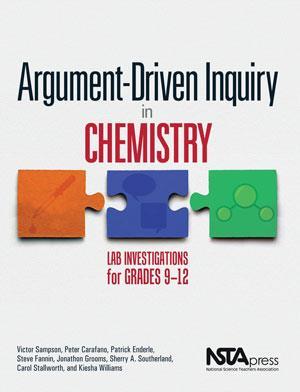Investigation activities

Argument-driven inquiry in chemistry
Victor Sampson et al
NSTA Press
2015 | 496pp | $44.95 (£30)
ISBN 9781938946226
http://amzn.to/1O7sD9o
Argument-driven inquiry in chemistry provides 30 investigation activities, all addressing chemistry content in a style that engages students through authentic scenarios.
The content and skills are those I’ve found to be fundamental to every chemistry course. The teachers’ notes contain timelines, safety precautions, tips and material preparation instructions. Each activity is linked to the US Next Generation Science Standards and Common Core State Standards on literacy and maths. Teachers’ notes for each activity highlight the specific content and skills students need to complete the investigation.
This resource is set apart from other lab manuals by its unique approach to scientific inquiry. Rather than guiding students through one set of steps, traditionally taught as the scientific method, students are first introduced to a task and the tools they might use. They then use a process akin to engineering design (including revisions, reflections and the collection of additional data) to build a scientific argument. Students use their data as evidence to support their claim, which is then subject to a peer review process before the final product is presented.
The idea of teaching this ‘claim-evidence-reasoning’ process can be intimidating. However, chapter one is a clear walk-through with many explanations and examples. Each activity includes suggestions for students on how to make these components clear in their own work.
I tried some of the activities with my pupils. Limiting reactants can be a confusing concept for many chemistry students, but the activity used basic concepts my students already knew, such as moles and mole ratios. It led them through the thought process using concrete, measurable examples on which to base their arguments.
We will be using more labs from this resource next year.









No comments yet